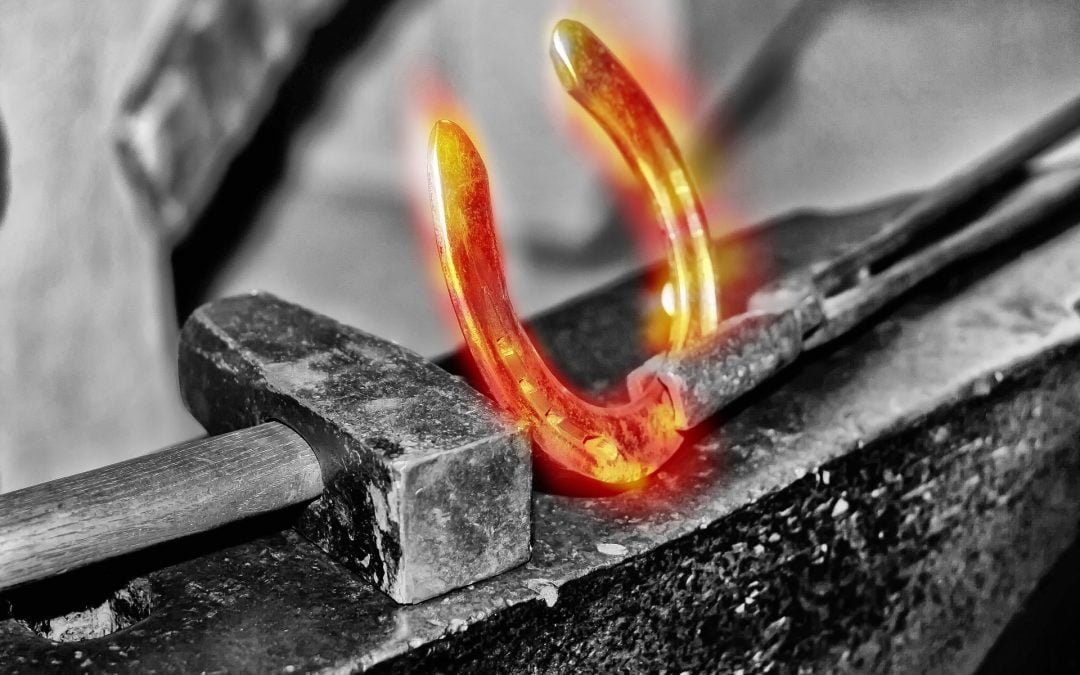Whether you are interested in blacksmithing for the creativity involved, or as a source of income, this ultimate blacksmithing guide will help you get started.
In this article you will find:
RELATED: I MADE IT MYSELF: Forging a Knife from Rebar
The Ultimate Blacksmithing Guide to All the Tools and Gear You Need to Get Started
Blacksmithing Tools
1. Forge
A large part of blacksmithing entails heating metals until they are malleable enough to bend and mold to your desired shapes. The best thing about a forge is that you can buy or build one if you are on a budget.
While forges come in all designs, but the two basic types used are the solid and non-solid fuel forges. Therefore, together with deciding which forge to go for, you have to consider the cost of fueling it, which mostly involves propane and coal.
2. Tongs
Blacksmithing entails handling hot metals that you cannot hold with your bare hands or even safety gloves. As a result, you will need medium-sized to large tongs to hold your hot metals when working on them.
As a beginner, consider getting yourself the ½ inch bolt tongs as you can use them for almost every blacksmithing need. And you can forge yourself another to meet your needs when you perfect your blacksmithing skills.
3. Anvil
Besides being a sturdy block with a flat surface, an anvil offers a sturdy surface to beat and mold your hot metalwork into shape. This makes it an equally important tool in blacksmithing.
You can get yourself an old one if you’re on a budget, but investing in a high-quality anvil will pay off in your blacksmithing adventure. Ensure you get one big enough to stand alone or to mount.
4. Hammers
There are various types of hammers used for blacksmithing. However, most blacksmiths commonly use the Cross-Pein hammer to move metal in a vertical direction to the hammer effectively.
Hammerheads dictate the functions and how the hammers can be used, but it’s better to purchase one that you can use in different ways. It, however, doesn’t hurt to have several if you can.
Precautionary Gear in Blacksmithing
5. Cotton or Fiber Clothing
With the high temperatures you will be exposed to in your workshop, the last thing you need is polyester or synthetic clothes. This is because these types of fabric can easily melt and stick onto your body under high temperatures.
For this reason, upgrade your work wardrobe with quality wool and cotton clothes to avoid such burn accidents. To keep up with the high temperatures, consider buying several cotton aprons. And steer clear of all loose clothing as it can easily catch fire.
6. Earplugs
The noise levels from hitting metals in a blacksmith’s workshop can go up to 80dB, which is dangerously high and can lead to progressive hearing loss. To prevent this, you will have to use earplugs and endure the uncomfortable feeling of using them.
The good thing is that there are various brands of earplugs that you can try out to find the one you like best.
7. Safety Glasses
Safety glasses will protect your eyes from extreme heat and any fragments that may fry around when hitting the metals. Keep in mind that respirator masks cannot make up for safety glasses.
Tip: Feel free to choose between wooden and plastic frames.
8. Respirator
Heating metals release toxic gases that are harmful to your health hence the need for a respirator. Having a respirator will help filter the harmful pollutants, thus providing you with clean air.
In addition to having a respirator, it will help to have a proper ventilation system in your blacksmithing space to eliminate the pollutants. However, avoid using a respirator if you have an underlying medical condition like asthma.
9. Hand Gloves
Though it is not likely that you will handle hot metal with your bare hands, it is advisable to get yourself a quality pair of safety gloves. This will protect your palms from getting burns, not to mention developing callouses.
10. Footwear
Being a blacksmith means being exposed to heavy metal and equipment that could fall off work counters at any time. What’s more, the risk is even more significant considering that these could be molten hot.
Therefore, it only makes sense to protect your feet with footwear that cannot catch fire or melt quickly. Industrial steel-toed boots will do the trick, but it doesn’t hurt to get yourself a boot with a metatarsal guard.
11. Fire Extinguisher
I cannot emphasize enough the need for a fire extinguisher, especially when your work involves working with fire. In conjunction with strategically placed extinguishers, a bucket of sand or water mixed with salt or detergent can effectively put out big fires.
Watch this video as Freerk Wieringa presents on hand forging a simple viking knife:
With this blacksmithing guide, getting started will not be as challenging. If anything, it will be even easier since you’ll have appropriate tools and gear to start you off. With these, your interest in blacksmithing can turn into a career with a little mentorship.
Are you an experienced blacksmith? What other tips do you have for beginners? Let us know in the comment section below!
Up Next:
- Survival DIY: How To Melt Aluminum Cans For Casting
- Knifemaking: Make A Knife From An Old Wrench
- A Complete Guide To Campfire Cooking
Calling all preppers, craftsmen, bushmasters, outdoorsmen, and all-around skilled people, Survival Life needs YOU! Click here if you want to write for us.
Don’t forget to stay connected with us on Facebook, Twitter, Pinterest, and Instagram!


